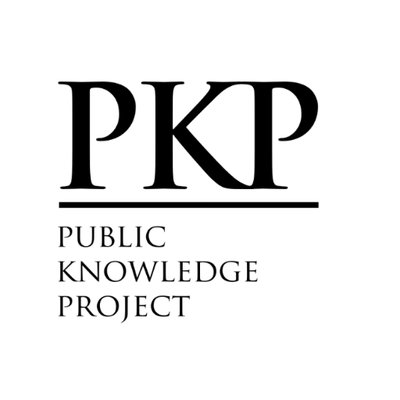Révéler la tapisserie des configurations de contrôle : une étude des PME au Cameroun
Insights from SMEs in Cameroon
DOI :
https://doi.org/10.59051/joaf.v15i1.791Mots-clés :
Configuration du contrôle, package du contrôle de gestion, efficacité du contrôle, cohérence interne, alignement externe.Résumé
Objectif : Imaginer les configurations de contrôle au sein des PME au Cameroun comme une tapisserie dynamique, intimement tissée avec divers fils de pratiques et de systèmes de gestion. L’objectif de ce travail est de démêler cette tapisserie et de mettre en lumière les éléments interconnectés qui constituent les configurations de contrôle dans le contexte des PME au Cameroun.
Méthode : Cette étude est exploratoire et suit donc une approche qualitative/abduction pour explorer, découvrir les pratiques de contrôle et les variables contextuelles des PME dans le contexte camerounais et comprendre la manière dont elles interagissent dans un package. La population de notre étude est constituée des équipes de direction (directeurs généraux, comptables internes et externes, contrôleurs de gestion, responsables financiers et opérationnels) de PME au Cameroun. Par conséquent, des entretiens semi-structurés ont été utilisés auprès de 25 équipes de direction de 20 PME des villes de Douala, Bafoussam et Bamenda pour la collecte de données. Les données collectées ont été analysées à l’aide de l’analyse comparative qualitative, une méthode théorique d’ensemble conçue pour comparer plusieurs cas en termes de configurations complexes d’attributs et de résultats. Les logiciels NVivo 12 et fsQCA ont été utilisés comme outils d’analyse des données.
Résultats : Les résultats de l’analyse ont révélé six configurations de contrôle utilisées par les cadres supérieurs des PME camerounaises, qualifiées de holistiques, à conduite douce, basées sur la police, semi-engagées, mécanistes et formatrices.
Originalité : Cette étude est une des premières dans le contexte des PME en Afrique. Ce travail explore et découvre la configuration des systèmes de contrôle de gestion fonctionnant comme un package dans les PME qui conduit à des performances supérieures.
Téléchargements
Références
Abernethy, M. A., and Brownell, P., 1997, « Management control systems in research and development organizations: the role of accounting, behaviour and personnel controls », Accounting, Organizations and Society, 22(3), 233-248.
Abernethy, M. A., and Brownell, P., 1999, «The role of budgets in organizations facing strategic change: an exploratory study », Accounting, Organizations and Society, 24(3), 189-204.
Abernethy, M. A., and Chua, W. F., 1996, «A field study of control system ‘redesign’: The impact of institutional processes on strategic choice», Contemporary Accounting Research, 13(2), 569–606.
Abernethy, M. A., and Lillis, A. M., 1995, « The impact of manufacturing flexibility on management control system design», Accounting, Organizations and Society, 20(4), 241-258.
Adler, P. S., and Borys, B., 1996, «Two types of bureaucracy: Enabling and coercive», Administrative Science Quarterly, 41(1), 61-89.
Anthony., 1965, «Planning and Control Systems: A Framework for Analysis», Boston: Harvard Business Press
Auzair, S. M., 2015, «A configuration approach to management control systems design in service organizations», Journal of Accounting and Organizational Change, Vol. 11 Iss 1 pp. 47 – 72.
Auzair, S. M., and Langfield-Smith, K., 2005, « The effect of service process type, business strategy and organizational life cycle on bureaucratic MCS in service organisations», Management Accounting Research, Vol. 16 No. 4, pp. 399-421.
Bedford, D. S., and Malmi, T., 2015, « Configurations of control: An exploratory analysis», Manage. Account. Res, http://dx.doi.org/10.1016/j.mar.2015.04.002
Bedford, D. S., and Sandelin, M., 2015, «Investigating management control configurations using qualitative comparative analysis: An overview and guidelines for application», Journal of Management Control, 26(1), 5–26.
Bedford, D. S., and Sandelin, M., 2015, « Investigating management control configurations using qualitative comparative analysis: An overview and guidelines for application», Journal of Management Control, 26(1), 5–26.
Bedford, D. S., Malmi, T., and Sandelin, M., 2016, « Management control effectiveness and strategy: An empirical analysis of packages and systems», Accounting, Organizations and Society, 51, 12–28.
Bedford, D. S., Malmi, T., and Sandelin, M., 2016, « Management control effectiveness and strategy: An empirical analysis of packages and systems», Accounting, Organizations and Society, 51, 12–28.
Brignall, S., 1997, « A contingent rationale for cost system design in services», Management Accounting Research, Vol. 8 No. 3, pp. 325-346.
Bruns, J., W. J., Waterhouse, J. H., 1975, « Budgetary control and organisational structure», Journal of Account Research, Autumn, 177–203.
Bruns, J., W. J., Waterhouse, J. H., 1975, « Budgetary control and organisational structure», Journal of Account Research, Autumn, 177–203.
Cardinal, L. B., Sitkin, S. B., Long, C. P., and Miller, C. C., 2018, « The Genesis of Control Configurations during Organizational Founding», In Organization Design.
Chenhall, R. H., and Langfield-Smith, K., 1998, « The relationship between strategic priorities, management techniques and management accounting: an empirical investigation using a systems approach», Accounting Organisation Society, 23 (3), 243–264.
Chenhall, R., and Moers, F., 2015, « The role of innovation in the evolution of management accounting and its integration into management control», Accounting, Organizations and Society, vol.47, pp.1-13.
Child, J., 1972, « Organisational structure, environment and performance: the role of strategic choice, Sociology, 6, 1–22.
Cinquini, L., and Tenucci, A., 2010, « Strategic management accounting and business strategy: a loose coupling? », Journal of Accounting and Organizational Change, Vol. 6 No. 2, pp. 228-259.
Dekker, J., Lybaert, N., Steijvers, T., and Depaire, B., 2015, « The effect of family business professionalization as a multidimensional construct on firm performance», Journal of Small Business Management, 53:516–538.
Demartini, M. C., and Otley, D., 2019, « Beyond the system vs. package dualism in Performance Management Systems design: A loose coupling approach», Accounting, Organizations and Society, https://doi.org/10.1016/j.aos.2019.101072
Dent, J. F., 1990, « Strategy, organisation and control: some possibilities for accounting research», Accounting Organisation Society, 15 (1/2), 3–25.
Duncan, R. B., 1972, « Characteristics of organizational environments and perceived environmental uncertainty», Administrative Science Quarterly, Vol. 17 No. 3, pp. 313-327.
Duncan, R., 1976, « The ambidextrous organisation: Designing dual structures for innovation», North Holland, New York, USA.
Einhorn, S., Heinicke, X., and Guenther, T.W., 2021, « Management control packages in family businesses: a confgurational approach», Journal of Business Economics, 91:433–478.
Einhorn, S., Heinicke, X., and Guenther, T.W., 2021, « Management control packages in family businesses: a confgurational approach», Journal of Business Economics, 91:433–478.
Ekholm, B. G., and Wallin, J., 2000, « Is the annual budget really dead? », European Accounting Review», 9(4), 519-539.
Ferreira, A., and Otley, D, 2009, « The design and use of performance management systems: An extended framework for analysis», Management Accounting Research, 20(4), 263e282
Fisher, J. G., 1998, « Contingency theory, management control systems and firm outcomes: Past results and future directions», Behavioral Research in Accounting, 10, 47–6.
Fiss, P., 2007, « A set-theoretic approach to organizational configurations», Academy of Management Review, 32, 1180–1198.
Fiss, P., 2011, « Building better causal theories: A fuzzy set approach to typologies in organization research», Academy of Management Journal, 54, 393–420.
Fiss, P., Sharapov, D., and Cronqvist, L., 2013, « Opposites attract? Opportunities and challenges for integrating large-N QCA and econometric analysis», Political Research Quarterly, 66, 191–198.
Flamholtz, E. G., 1983, « Accounting, budgeting and control systems in their organizational context: theoretical and empirical perspectives», Accounting, Organizations and Society, 8(2), 153-169.
Flamholtz, E. G., Das, T. K., and Tsui, A. S., 1985, « Toward an integrative framework of organizational control», Accounting, organizations and society, 10(1), 35-50.
Friis, I., Hansen, A., and Vamosi, T., 2015, « On the effectiveness of incentive pay: Exploring complementarities and substitution between management control system elements in a manufacturing firm», European Accounting Review, 24(2), 241–76.
Heinicke, A., Guenther, T., and Widener, S., 2016, « An examination of the relationship between the extent of a flexible culture and the levers of control system: The key role of beliefs control», Management Accounting Research, 33, 25.
Helsen, Z., Lybaert, N., Steijvers, T., Orens, R., and Dekker, J., 2017, « Management control systems in family firms: a review of the literature and directions for the future», Journal of Economic Survey, 31:410–435.
Henri, J.-F., 2006a, « Management control systems and strategy: A resource-based perspective», Accounting, Organizations and Society, 31(6), 529-558.
Hiebl, M. R. W., Feldbauer-Durstmüller, B., and Duller, C., 2013, « The changing role of management accounting in the transition from a family business to a non-family business», Journal Accounting Organisational Change, 9:119–154.
Kennedy, F. A., and Widener, S. K., 2008, « A control framework: Insights from evidence on lean accounting»,Management Accounting Research, 19(4), 301–323.
King, R., Clarkson, P. M., and Wallace, S., 2010, « Budgeting practices in small healthcare businesses», Management Accounting Research, Vol. 21 No. 1, pp. 40-55.
Koenig, G., 1993, « Production de la connaissance et constitution des pratiques organisationnelles», Revue de Gestion des Ressources Humaines, 9, 4-17.
Kumar, K., and Subramaniam, R., 1997, « Porter’s strategic types: differences in internal processes and their impact on performance», Journal of Applied Business Research, Vol. 14 No. 1, pp. 107-123.
Langfield-Smith, K., 2008, « A review of quantitative research in management control systems and strategy», In C. S. Chapman, A. G. Hopwood, & M. D. Shields (Eds.), Handbook of management accounting research (pp. 753–784). Amstredam: Elsevier.
Lowry, J. F., 1990, « Management accounting and service industries: an exploratory account of historical and current economic contexts», Abacus, Vol. 26 No. 2, pp. 159-184.
Luft, J., and Shields, M. D., 2003, « Mapping management accounting: Graphics and guidelines for theory-consistent empirical research», Accounting, Organizations and Society, 28(2–3), 169–249.
Macintosh, N. B., and Daft, R. L., 1987, « Management control systems and departmental interdependencies: An empirical study», Accounting, Organizations and Society, 12(1), 49–61.
Malmi, T., 2013, «Management control as a package: the need for international research», Journal of Management Control, 23(4), 229-231.
Malmi, T., and Brown, D. A., 2008, « Management control systems as a package: Opportunities, challenges and research directions», Management accounting research, 19(4), 287-300.
Merchant, K. A., and Otley, D. T., 2006, « A review of the literature on control and accountability», Handbooks of management accounting research, 2, 785-802.
Merchant, K. A., and van der Stede, W. A., 2007, « Management Control Systems, Edinburgh Gate», England: Pearson Education Limited.
Merchant, K. A., and Van der Stede, W. A., 2007, « Management control systems: performance measurement, evaluation and incentives»,Pearson Education.
Merchant, K. A., and Van der Stede, W. A., 2012, « Management Control Systems: Performance Measurement, Evaluation and Incentives», third ed. Prentice Hall, London.
Milliken, F. J., 1987, « Three types of perceived uncertainty about the environment: state, effect and response uncertainty», Academy of Management Review, Vol. 12 No. 1, pp. 133-143.
Mintzberg, H., 1979, « The Structure of Organizations», Prentice Hall, Upper Saddle River, NJ.
Mintzberg, H., 1989, « Mintzberg on Management: Inside our Strange World of Organizations», Free Press, New York.
Moilanen, S., 2012, « Learning and loosely coupled elements of control», Journal of Accounting and Organizational Change, Vol. 8 No. 2, pp. 136-159.
Moores, K., and Yuen, S., 2001, « Management accounting systems and organizational configuration: a life-cycle perspective», Accounting Organisation Society, 26, 351–389.
Mundy, J., 2010, « Creating dynamic tensions through a balanced use of management control systems», Accounting, Organizations and Society, 35(5), 499-523.
O’Grady, W., and Akroyd, C., 2016, « The MCS package in a non-budgeting organisation: A case study of mainfreight», Qualitative Research in Accounting and Mananagement, 13 (1), 2–40.
Orton, J. D., and Weick, K. E., 1990, « Loosely coupled systems: a reconceptualization», Academy of Management Review, 15 (2), 203–233.
Otley, D., 1980, « The contingency theory of management accounting: achievement and prognosis», Accounting, organizations and society, 5(4), 413-428.
Otley, D., 2016, « The contingency theory of management accounting and control: 1980- 2014», Management Accounting Research, 31, pp.41-62.
Ouchi, W. G., 1977, « The relationship between organizational structure and organizational control», Administrative Science Quarterly, 22, 95-113.
Ouchi, W. G., 1979, « A conceptual framework for the design of organizational control mechanisms», Management Science, 25, 833-848.
Santini, F., Elisei, L., Malmi, T., Scrucca, L., 2022, « Management-control-system configurations in medium-sized mechanical-engineering firms: an exploratory analysis», Accounting Research Journal, vol. 35(6), p 834-853.
Speklé, R. F., and Widener S. K., 2018, « Challenging issues in survey research: Discussion and suggestions», Journal of Management Accounting Research, forthcoming.
Speklé, R., 2001, « Explaining management control structure variety: a transaction cost economics perspective», Accounting Organisation Society, 26, 419-441.
Tessier, S., and Otley, D., 2012 « A conceptual development of Simon’s Levers of Control framework», Management Accounting Research, 23(3), 171-185.
Tiwana, A., 2010, « Systems Development Ambidexterity: Explaining the Complementary and Substitutive Roles of Formal and Informal Controls», Journal of Management Information Systems, 27(2), 87-126.
Van der Kolk, B., 2019, « Management control packages: a literature review and guidelines for public sector research», Public Money and Management, DOI: 10.1080/09540962.2019.1592922
Téléchargements
Publié
Numéro
Rubrique
Licence
© hippolyte nkeng teneng, Alexis Ngantchou 2024

Cette œuvre est sous licence Creative Commons Attribution - Pas d'Utilisation Commerciale - Pas de Modification 4.0 International.
Les auteurs qui publient dans cette revue acceptent les termes suivants :
- Les auteurs conservent le droit d'auteur et accordent à la revue le droit de première publication, l'ouvrage étant alors disponible simultanément, sous la licence Licence d’attribution Creative Commons permettant à d'autres de partager l'ouvrage tout en en reconnaissant la paternité et la publication initiale dans cette revue.
- Les auteurs peuvent conclure des ententes contractuelles additionnelles et séparées pour la diffusion non exclusive de la version imprimée de l'ouvrage par la revue (par ex., le dépôt institutionnel ou la publication dans un livre), accompagné d'une mention reconnaissant sa publication initiale dans cette revue.
- Les auteurs ont le droit et sont encouragés à publier leur ouvrage en ligne (par ex., dans un dépôt institutionnel ou sur le site Web d'une institution) avant et pendant le processus de soumission, car cela peut mener à des échanges fructueux ainsi qu'à un nombre plus important, plus rapidement, de références à l’ouvrage publié (Voir The Effect of Open Access).






















